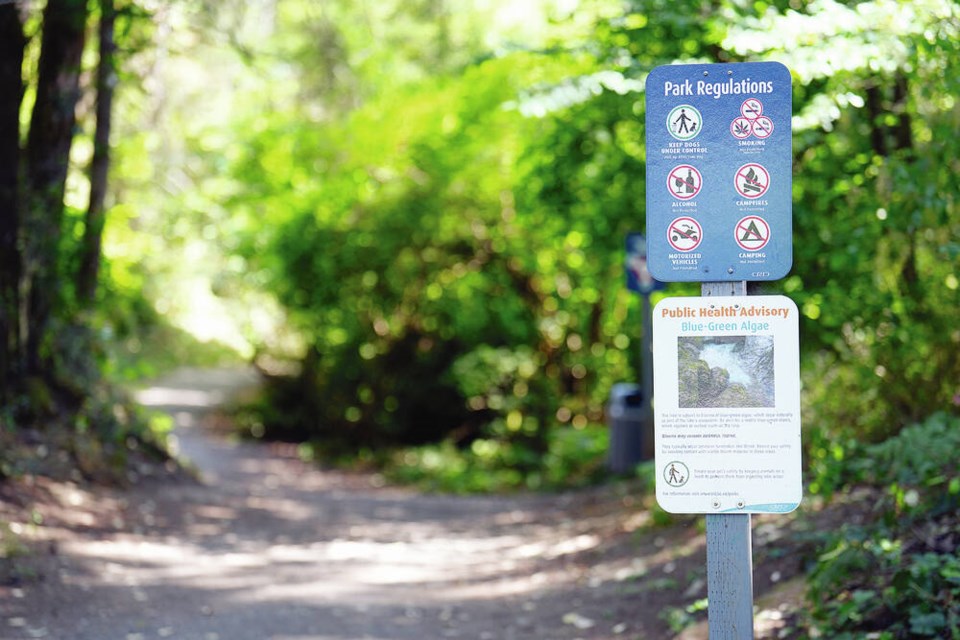Blue-green algae blooms at Elk, Beaver and Thetis lakes don’t mean you can’t take a dip at the popular swimming spots, but it’s important to watch for indicators the algae are present, say experts.
The algae — naturally occurring in lakes, ponds and streams — do not always contain the toxins that can give people headaches and abdominal pain if the water is ingested, or cause fatal liver damage in dogs, said Dr. Murray Fyfe, a medical health officer for Island Health.
“There’s no way of telling just by looking at the algae that toxins are there,” Fyfe said.
Fyfe said the blue-green algae blooms are “very recognizable” — they’re usually pea-green, but can also be tan or red.
A bloom can appear as surface scum “and when you look at it, you don’t want to go in there anyhow.”
“Just the presence of blue-green algae means that there could be toxin there, and people should be thinking about and just be cautious before they use the beaches where the advisories are in place,” Fyfe said.
Tom Bamford, race director of the Victoria Half Triathlon, which starts in Elk Lake on Sunday, said recent testing showed the levels of blue-green algae in the lake are “completely safe.”
“Our results show that there is not a hazard at this moment, and we look forward to staging the provincial championships there on Sunday morning,” he said.
Advisories about blue-green algae at the regional lakes were issued by the Capital Regional District in consultation with Island Health. Monitoring of toxin levels is ongoing.
Glenn Harris, the Capital Regional District’s senior manager of environmental protection, said the algae can grow in almost any lake — even a relatively deep lake like Thetis, where there is still enough runoff for nutrients to flow into the water.
“It’s a combination of things like temperature, nutrients, the light penetrating the water and sometimes wind,” he said. “There’s weeds growing, so we know there’s some nutrients coming into the lake.”
The shallower waters of Beaver and Elk lakes, however, are more susceptible to algae blooms, Harris said.
Harris said the appearance of blue-green algae at the two lakes could be reduced in future by an oxygenator installed at the bottom of Elk Lake last summer that pumps oxygen into the water.
The device works in part by keeping an overabundance of phosphorous in the lake’s sediments from rising to the surface.
Its start was delayed until this year and it will take time to have an effect, he said.
“We’ll get through a season and this winter, and hopefully it’s going to knock down the blooms moving forward.”
In the meantime, Harris said: “We’re saying if you see the bloom, just stay away from those areas and keep your pets away from those areas.”
— With a file from Roxanne Egan-Elliott
>>> To comment on this article, write a letter to the editor: [email protected]



